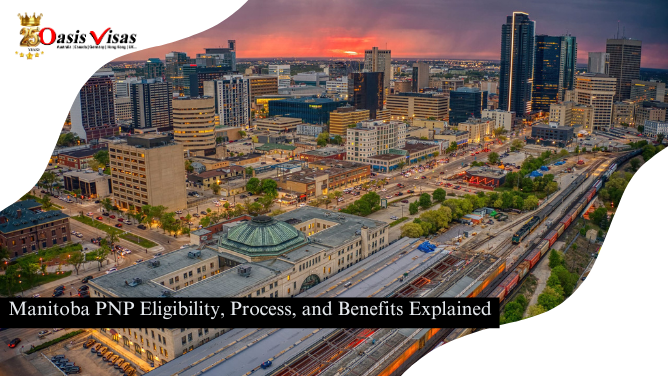
If you’re a teacher dreaming of a new life in Canada, you’re not alone. Thousands of skilled workers apply for Canadian Permanent Residency, and teachers are among the top professionals welcomed by the country. With Canada’s growing population and a strong focus on education, qualified teachers are in demand in many provinces. And the good news? The Express Entry system makes it faster and easier for teachers to apply for permanent residency.
If you have teaching experience, good English or French language skills, and a passion for education, your journey to becoming a permanent resident in Canada might be closer than you think. This blog will guide you through the entire process of how teachers can get Canadian PR through Express Entry, what qualifications are needed, and why this is a great opportunity for educators from around the world.
What is Express Entry?
Express Entry is an online system used by the Canadian government to manage applications for Canadian permanent residency. It’s one of the fastest and most efficient immigration pathways. There are three main immigration programs under Express Entry:
- Federal Skilled Worker Program (FSWP)
- Canadian Experience Class (CEC)
- Federal Skilled Trades Program (FSTP)
Most teachers apply through the Federal Skilled Worker Program, which is for individuals with foreign work experience and education.
Why Teachers Are in Demand in Canada
Canada has a high-quality education system and needs experienced and passionate teachers at various levels elementary, secondary, and special education. Many provinces face a shortage of teachers, especially in rural or remote areas.
If you have the right skills, this shortage can work in your favor when applying for Canadian permanent residency. You can even get extra points in your Express Entry profile if your occupation is in demand.
Step-by-Step Guide for Teachers to Apply for Canadian PR
1. Check Eligibility for Express Entry
To be eligible for Express Entry as a teacher, you must:
- Have at least one year of continuous full-time teaching experience
- Meet the required language score in English or French (usually IELTS or CELPIP)
- Have a completed university degree
- Get an Educational Credential Assessment (ECA) to verify your degree is equal to a Canadian one
Make sure your job duties match those listed in the National Occupational Classification (NOC) code for teachers. For example:
- NOC 41220 – Secondary School Teachers
- NOC 41221 – Elementary School and Kindergarten Teachers
2. Create Your Express Entry Profile
Once you meet all the eligibility requirements, the next step is to create your Express Entry profile. This profile includes your age, work experience, education, language test scores, and more. All this information gives you a Comprehensive Ranking System (CRS) score. The higher your CRS score, the better your chances of getting an Invitation to Apply (ITA) for Canadian permanent residency.
3. Improve Your CRS Score (Optional but Helpful)
If your CRS score is low, you can boost it by:
- Getting a higher language test score
- Gaining more work experience
- Completing another degree or diploma
- Getting a job offer from a Canadian employer (adds 50–200 points)
- Applying through a Provincial Nominee Program (adds 600 points)
Many teachers increase their CRS score by securing a provincial nomination, which almost guarantees an invitation for Canadian permanent residency.
4. Receive an Invitation to Apply (ITA)
If your CRS score is above the cut-off in one of the Express Entry draws, you will receive an ITA. This is a golden opportunity to apply for Canadian permanent residency. You will have 60 days to submit your complete application along with all documents.
5. Submit Your Application
This is where you submit the final application for Canadian permanent residency. You’ll need to upload documents such as:
- Language test results
- Educational Credential Assessment
- Work experience letters
- Police clearance certificates
- Medical examination results
Once submitted, the Canadian government will review your application, and if everything is in order, you will be granted Canadian permanent residency.
6. Prepare for Your Move to Canada
After receiving your Confirmation of Permanent Residence (COPR), you’re ready to move to Canada. Many provinces have newcomer programs that help teachers get certified and find jobs. You can also attend workshops or take local teaching qualification programs to become eligible to work in schools across Canada.
Benefits of Getting Canadian Permanent Residency as a Teacher
- Live and work anywhere in Canada: With Canadian permanent residency, you can choose any province or city to settle in.
- Access to healthcare and social benefits: Permanent residents get free public healthcare and other benefits like child support and retirement programs.
- Sponsor your family: You can bring your spouse and children with you and even sponsor other family members later.
- Pathway to Canadian citizenship: After living in Canada for a few years as a permanent resident, you can apply for citizenship.
- Job security and quality of life: Canada offers a peaceful environment, quality education for your kids, and a strong job market for teachers.
For teachers who are passionate about education and looking for a better future, Canadian permanent residency through Express Entry is a life-changing opportunity. The process is straightforward if you follow each step carefully. From verifying your qualifications to improving your CRS score, every action you take brings you closer to your Canadian dream. With high demand for educators and a welcoming immigration system, Canada continues to be a top choice for skilled professionals from all over the world.
If you’re ready to make a difference in classrooms across Canada and build a secure future for yourself and your family, start your Canadian permanent residency journey today. Whether you’re a school teacher, college lecturer, or education specialist, your skills are valued and Canada is waiting for you.










